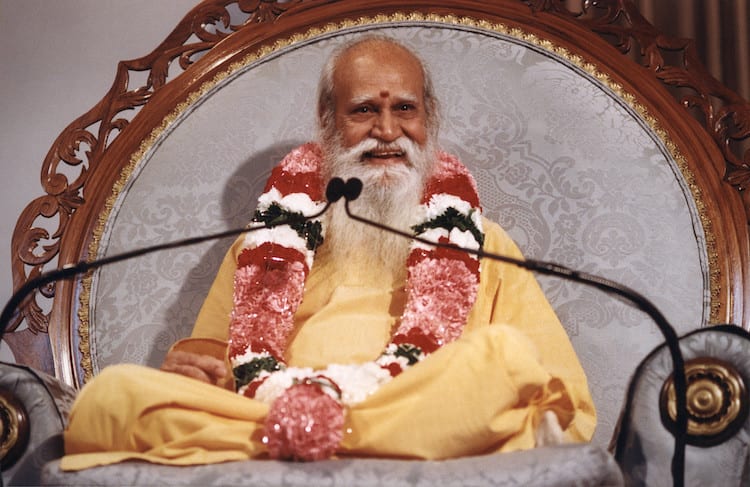When Yoga practitioners want to expand their understanding of Yoga philosophy and explore the depths of the Self, they often turn to the Yoga Sutras. In the following commentary, excerpted from The Yoga Sutras of Patanjali, Gurudev offers readers an introduction to Book One and gives an explanation of sutra 1.2.
Book One: Samadhi Pada
Portion on Contemplation
This portion begins our study of Raja Yoga, or Astanga (eight-limbed) Yoga as it is sometimes called. The Yoga Sutras as expounded by the sage Patanjali Maharishi—the first who carefully coordinated yogic thought and practices and explained them to his students—comprise the first and foremost scripture of Yoga. As he expounded these thoughts, his students jotted them down in a sort of shorthand using just a few phrases that we call sutras. The literal meaning of the word sutra is “thread;” and these sutras are combinations of words threaded together, usually not even well-formed sentences with subjects, predicates, and so on. Yet, within the space of these two hundred short sutras, we find the entire science of Yoga clearly delineated— its aim, the necessary practices, the obstacles you may meet along the path, their removal, and precise descriptions of the results that will be obtained from such practices.
1.2 Yogas citta vrtti nirodhah.
The restraint of the modifications of the mind-stuff is Yoga.
In this sutra, Patanjali imparts the goal of Yoga. For a keen student, this one sutra would be enough, because the rest of them only explain this one. In this sutra, Not only has Patanjali conveyed the definition of Yoga, but he has also provided the practice. “If you can control the rising of the mind into ripples, you will experience Yoga.”
Now, we will discuss the meaning of each word of the sutra. Normally, the word Yoga translates as “union,” but for a union to take place, we need two entities to unite. In this case, what is to unite with what? So here, we take Yoga to mean the yogic experience. The extraordinary experience gained by controlling the modifications of the mind is itself called Yoga.
Citta is the sum total of mind. To have a full picture of what Patanjali means by “mind,” you should know that within the citta are different levels. The basic mind we call ahamkara, or the ego, the “I” feeling. This gives rise to the intellect or discriminative faculty, which we call buddhi. Another stage is manas, the desiring part of the mind that that gets attracted to outside things through the senses.
For example, say you are quietly sitting and enjoying solitude when a nice smell comes from the kitchen. The moment the manas records, “I’m getting a fine smell from somewhere,” the buddhi discriminates, “What is that smell? I think it’s cheese. How nice. What kind? Swiss? Yes, it’s Swiss cheese.” Then, once the buddhi decides, “Yes, it’s a nice piece of Swiss cheese like you enjoyed in Switzerland last year,” the ahamkara says, “Oh, is it so? Then I should have some now.” These three things happen at one time, but so quickly that we seldom distinguish between them.
These modifications give rise to the effort to get the cheese. That is, the want is created and, unless you fulfill it by peeping into the kitchen and eating the cheese, your mind will not go back to its original peaceful condition. The want is created, then the effort to fulfill the want, and once you fulfill it, you are back to your original peaceful position. Normally, you are in the peaceful state. That is the natural condition of the mind. However, these citta vrttis, or the modifications of the mind-stuff, disturb that peace.
If you would like to share your thoughts, experiences, or ask a question about this teaching,
please join the discussion on Facebook.



